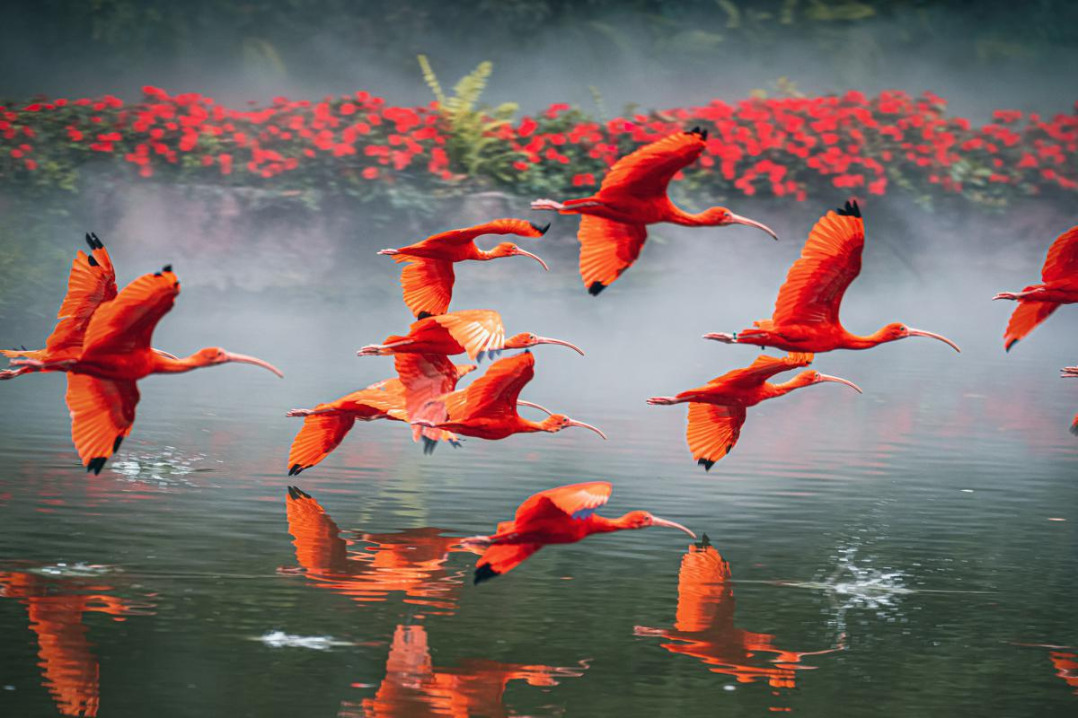Scenic area on track for full reopening


Jiuzhaigou, a scenic valley in southwestern China's Sichuan province that is on the UNESCO World Heritage list, will fully reopen to tourists in the foreseeable future, a senior official said on Friday.
It was closed temporarily following a magnitude 7 earthquake in August 2017 and partially reopened a year ago.
Peng Qinghua, secretary of the Sichuan Provincial Committee of the Communist Party of China, heralded the full reopening at a group discussion during the annual session of the National People's Congress, China's top legislature, in Beijing.
Tourist attractions in Jiuzhaigou, in Sichuan's Aba Tibetan and Qiang autonomous prefecture, include 108 alpine lakes and its Tibetan and Qiang ethnic cultures.
Some of Jiuzhaigou's scenic wonders were damaged in the earthquake, which killed 25 people and injured 493.
Two days after the quake, the Nuorilang Waterfall collapsed. Standing 24.5 meters tall, it was China's widest waterfall at 270 meters and had been chosen by netizens as one of the country's most spectacular natural sights.
Since the partial reopening of the scenic area on March 8 last year, visitor numbers have been capped at 2,000 a day because rebuilding work is underway.
Jiuzhaigou's post-quake reconstruction plan called for 220 projects to be completed by next year, and 76 have been finished. Landmarks such as the Nuorilang Waterfall and Wuhua Lake have been restored to their former beauty, Yang Kening, head of Aba, said at the group discussion, which was open to the media.
Jiuzhaigou is one of five sites in Sichuan on the UNESCO World Heritage list. The others are Huanglong in Aba, which is known for its karst formations and colored ponds; Mount Emei in the city of Emeishan, which is one of China's four sacred Buddhist mountains; the Leshan Grand Buddha in the city of Leshan, which is the world's largest sitting Buddha; and the habitat of the giant panda.
Peng said he considered Jiuzhaigou, the giant panda and the Sanxingdui Ruins, 40 kilometers from the provincial capital of Chengdu, to be Sichuan's top three calling cards. More than 80 percent of the world's giant pandas are in Sichuan.
Sanxingdui was found by a farmer digging in his fields in 1929. Since then, more than 10,000 gold, bronze and jade items dating back to between 5,000 and 3,000 years have been unearthed there.
The ruins, located on the upper reaches of the Yangtze River, serve as proof that the origins of Chinese civilization are diverse, dispelling theories the Yellow River was its sole starting point.
- Portuguese students enjoy cultural activities in Tianjin
- Hainan's 72 shipping lines deliver goods across the globe
- Northern China issues alerts for rainstorms, flooding
- Anhui youth returns safely from Myanmar
- Dali pledges to intensify preservation of environment
- SCO summit in Henan promotes common prosperity




































